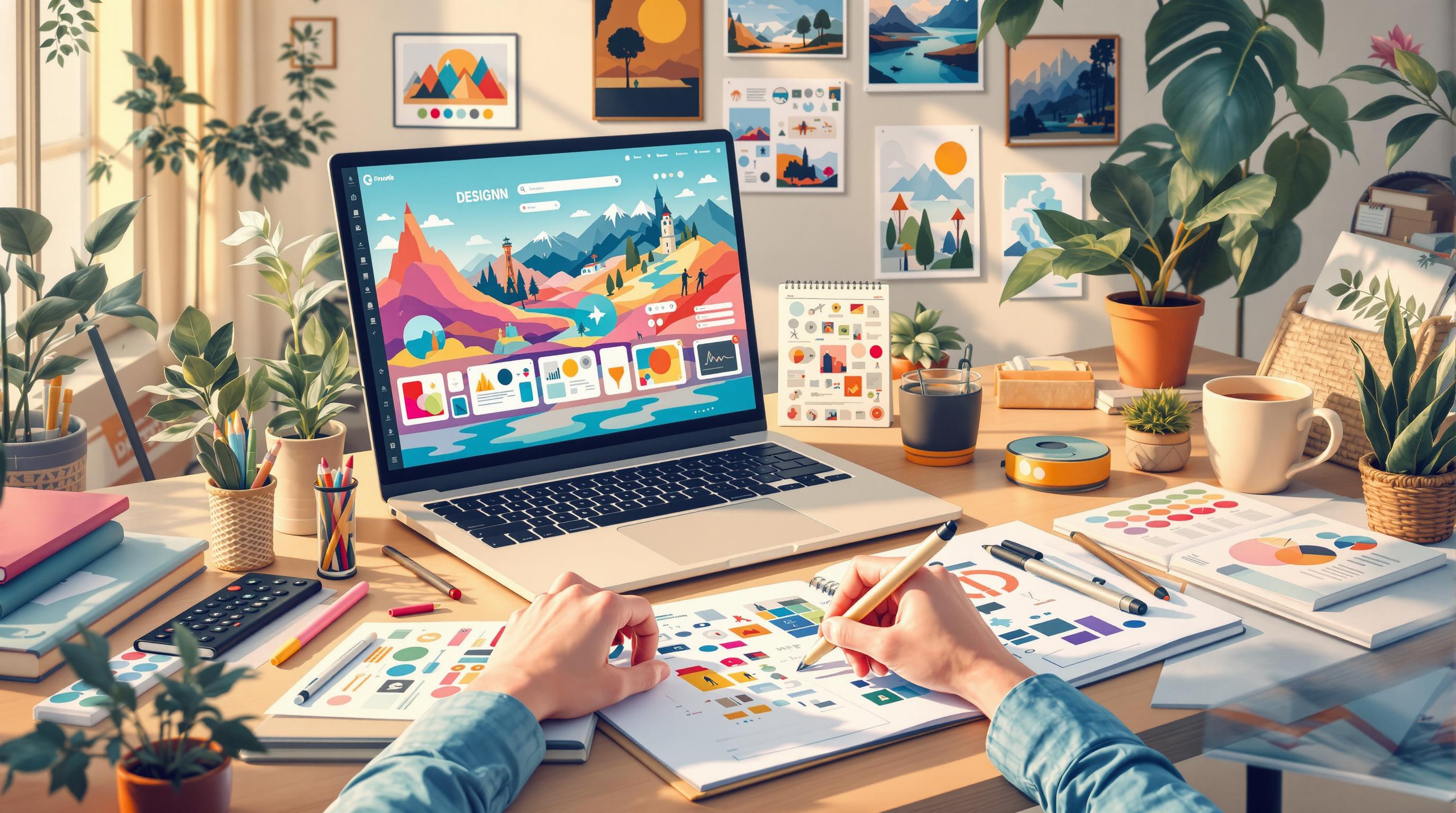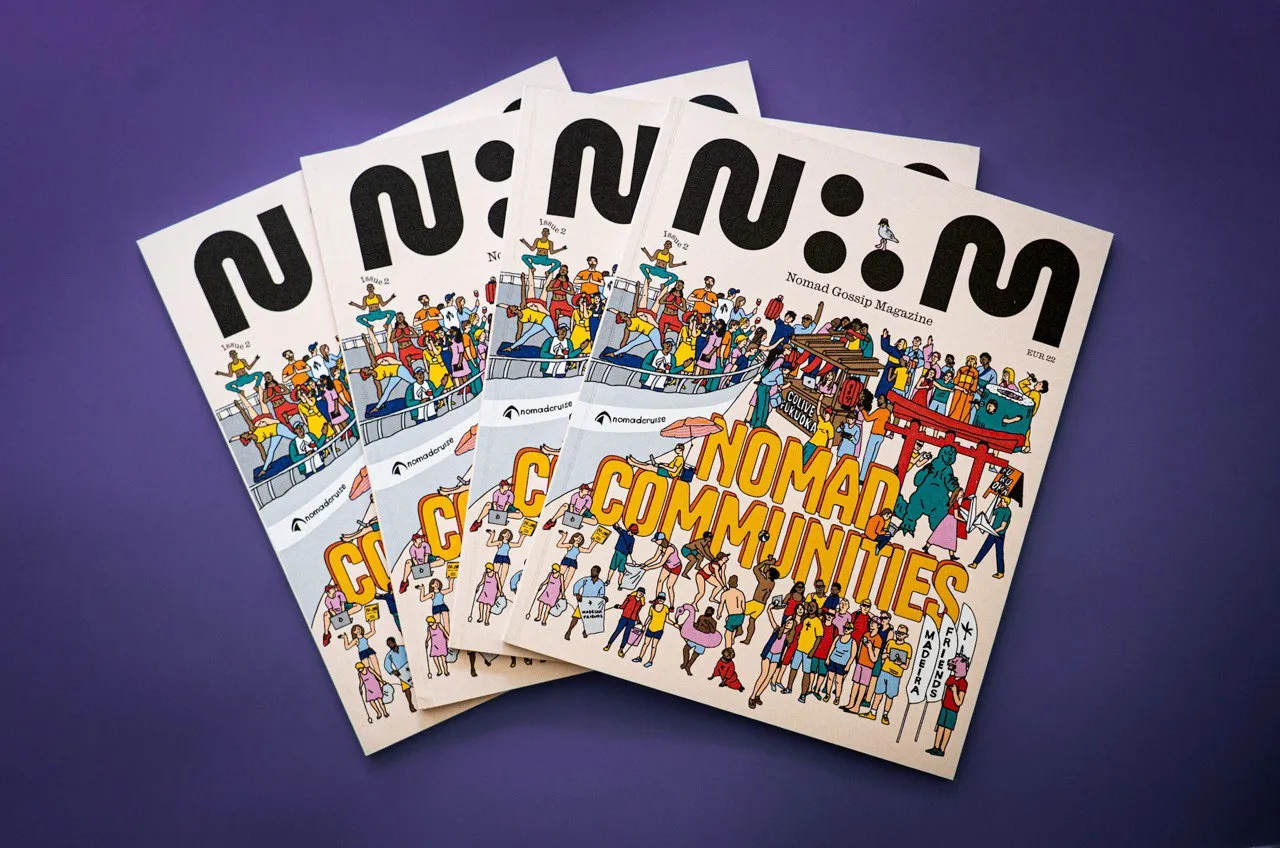Remote graphic design jobs are booming in 2025, but competition is fierce. Here’s how you can stand out and land the role you want:
- Build a strong portfolio: Create a clean, easy-to-navigate website showcasing your best work with detailed case studies.
- Learn in-demand skills: Focus on tools like Figma, Blender, After Effects, and Unity. Stay updated on trends like AI, 3D design, and AR/VR.
- Leverage job platforms: Use sites like Dribbble, Behance, and Upwork to find opportunities tailored to your expertise.
- Network actively: Engage with professional communities and maintain an updated presence on design networks.
- Stay current: Take online courses to improve your skills and explore emerging technologies like sustainable design and data-driven approaches.
Remote work offers flexibility and global opportunities, but success requires preparation. Focus on honing your skills, building connections, and creating a standout online presence.
Current State of Remote Design Jobs
The world of remote design has changed significantly, mirroring the broader shift to remote work [1]. This evolution has opened up fresh opportunities for graphic designers, particularly in tech, marketing, and eCommerce. Let’s dive into the skills driving this transformation.
Top Design Skills for 2025
Today’s remote designers need a mix of technical know-how and flexibility. AI tools are becoming a game-changer, automating repetitive tasks and boosting creative processes [2]. Designers must balance classic design principles with new technologies.
Here are some key technical skills shaping the field:
| Skill Category | Tools to Know | How They’re Used in the Industry |
|---|---|---|
| UI/UX Design | Figma, Adobe XD | Enhancing personalization and accessibility |
| Motion Graphics | After Effects, Lottie | Creating interactive content and animations |
| 3D Design | Blender, Cinema 4D | Building immersive visuals and product models |
| AR/VR Design | Unity, Adobe Aero | Designing virtual showrooms and interactive demos |
“The graphic design landscape in 2025 is dynamic and full of opportunities. By staying informed about the latest trends and continuously updating their skills, designers can remain competitive and create impactful work.” - Staney Joseph, Founder [2]
These skills are in demand across a wide range of industries.
Remote Design Jobs by Industry
Remote design roles differ depending on the industry. Tech companies are at the forefront, with 74% of remote-capable positions adopting hybrid work models [1].
Some of the most active areas include:
| Industry | Typical Roles |
|---|---|
| Tech | UX/UI Designer |
| Marketing | Digital Marketing Specialist, Content Strategist |
| eCommerce | UX/UI Designer |
One standout example is IKEA’s update to its AR app in February 2025. The app now allows customers to see how furniture fits in their homes before buying - a perfect blend of design and technology [3].
As the market evolves, there’s growing demand for designers who combine creativity with ethical and sustainable practices [2]. Companies also prize those skilled in data-driven design and remote teamwork.
Creating an Effective Portfolio
Your portfolio plays a crucial role in landing remote design jobs. In today’s competitive market, a well-crafted portfolio can make all the difference in getting noticed.
Setting Up Your Portfolio Website
Your portfolio website should be both visually appealing and easy to navigate. Here are some key elements to include, along with tips for implementation:
| Element | Purpose | Tips for Implementation |
|---|---|---|
| Clean Layout | Makes navigation simple | Use clear hierarchy and plenty of whitespace |
| Case Studies | Show your design process | Highlight project goals, your role, and measurable outcomes |
| High-Quality Images | Showcase the details of your work | Resize and compress images for fast loading without losing quality |
| Contact Information | Make it easy for clients to reach you | Add clear contact details and a call-to-action on every page |
“As a freelance graphic designer, your portfolio is one of your most important business assets. In fact, it’s often the determining factor in a client’s hiring process.” - Stephanie Corrigan [4]
Displaying Different Project Types
When presenting your work, focus on quality rather than quantity. Each project should tell a story about your design approach and problem-solving skills. Be sure to include:
- Project background and goals
- Your specific role and contributions
- Steps in your design process and challenges you addressed
- Results with measurable outcomes and client feedback
- High-resolution visuals of the final product
“Don’t just upload pretty pictures to your portfolio. Tell your audience the story behind your designs.” - Graham Shorr [5]
Connecting with professional networks can also help you expand your reach.
Using Design Networks
While your personal portfolio website is your primary showcase, professional design networks can help you gain more exposure and connect with others in the industry.
| Platform | Annual Cost | Key Advantages |
|---|---|---|
| Adobe Portfolio | $636 (≈$53/month) | Works seamlessly with Behance and Creative Cloud |
| Squarespace | $168 | Offers polished templates with easy customization |
| Carrd | $40 | Budget-friendly with a simple, user-friendly interface |
Keep your portfolio up to date across all platforms. Regular updates show that you’re active in the design community and highlight your latest skills.
sbb-itb-574d71c
Where to Find Remote Design Work
Landing remote design work in 2025 means using a mix of platforms and strategies to connect with the right opportunities.
Design Job Boards
Job boards are a great starting point. They often include filters to help you find roles that match your skills. For example, Dribbble Jobs has options tailored for design roles, Behance Jobs links directly with Adobe Portfolio for both full-time and freelance positions, and Remote OK can send you alerts about remote design openings. These tools make it easier to focus on jobs that suit your expertise.
Professional Design Networks
Building a strong network can open doors to remote work. Platforms like Behance and Dribbble are perfect for this. Make sure your profile clearly states that you’re looking for remote opportunities. Stay active by interacting with other designers’ work and regularly updating your portfolio to reflect your availability and skills.
Freelance Platforms
Freelance platforms offer flexible, project-based work that complements other job-hunting efforts. To stand out, your portfolio should include at least 10 varied projects that showcase your skills. Highlight your proficiency with tools like Figma, strong design principles, and experience working remotely.
On sites like Upwork, tailor your profile by emphasizing your software expertise, sharing case studies from previous projects, and showcasing examples of successful remote collaborations. This can help you attract clients who value your ability to work independently and deliver quality results.
Keeping Your Skills Current
Stay sharp by updating your technical and creative skills to remain competitive in remote graphic design as we move into 2025.
Essential Software Skills
Get comfortable with the tools that dominate the design world. Adobe Creative Suite is still the go-to, with Photoshop, Illustrator, and InDesign leading the pack. If you’re working on motion graphics, proficiency in After Effects is a must.
AI tools like Adobe Sensei can handle repetitive tasks, giving you more time to focus on creative projects. For interface and web design, Sketch is a key tool. If you’re interested in AR/VR design, dive into Unity and Unreal Engine to expand your opportunities.
Learning Resources for Designers
Online platforms offer excellent courses to sharpen your skills. Here are a few top-rated options:
| Course Name | Platform | Rating | Focus Area |
|---|---|---|---|
| Google UX Design | Coursera | 4.8/5 (89K reviews) | UI/UX Fundamentals |
| Graphic Design | California Institute of the Arts | 4.7/5 (21K reviews) | Design Principles |
| Adobe Graphic Designer | Coursera | 4.6/5 (473 reviews) | Adobe Creative Suite |
These courses cover everything from typography to color theory and digital media. Whether you’re a beginner or more advanced, there’s something for you. Many of these programs also provide certificates, which can boost your professional profile.
Emerging Design Technologies
To meet new challenges in the design world, focus on these three areas:
- 3D Design Tools: Tools like Blender, Cinema 4D, and Adobe Dimension are essential for creating 3D elements that stand out.
- Collaborative Platforms: Get familiar with Figma, Miro, and Slack to work effectively in remote teams.
- Motion Design: Hone your animation skills using After Effects and Lottie to create dynamic visuals.
Another trend shaping the industry is sustainable design. Incorporate eco-friendly principles into your projects and think about reducing the digital carbon footprint. Additionally, using data-driven design can help you create better user experiences.
Conclusion
To succeed in securing a remote graphic design job in 2025, you’ll need a mix of technical skills, a strong online presence, and a commitment to keeping your abilities sharp. With remote work expected to account for 90 million jobs by 2030 [6], the field of graphic design offers plenty of opportunities.
Here’s what you need to focus on:
Build a Strong Digital Presence
Craft an online portfolio that highlights your best and most diverse work. Make sure your resume is optimized for applicant tracking systems (ATS). While expertise in tools like Adobe Creative Suite remains essential, staying familiar with newer technologies like 3D design software and AI-based platforms is becoming just as important. Don’t forget - being able to collaborate effectively in remote settings is now a must-have skill.
Stay Ahead of the Competition
Remote roles attract a global pool of applicants, so standing out is key. Keep learning and growing by exploring new design techniques and being active in professional communities. Success in this space requires more than just creative talent - you’ll also need excellent time management, self-motivation, and the ability to work seamlessly with others online.



